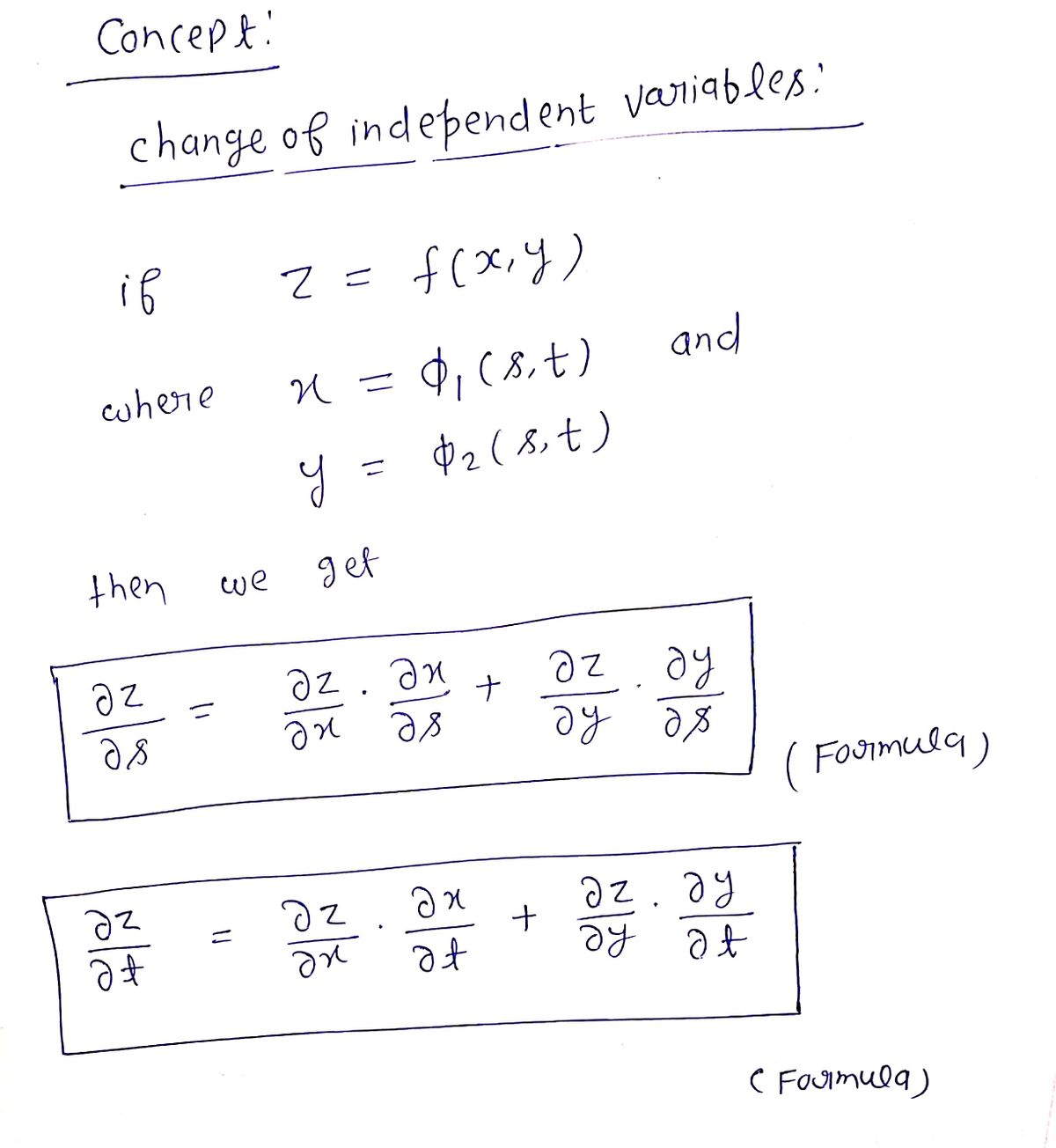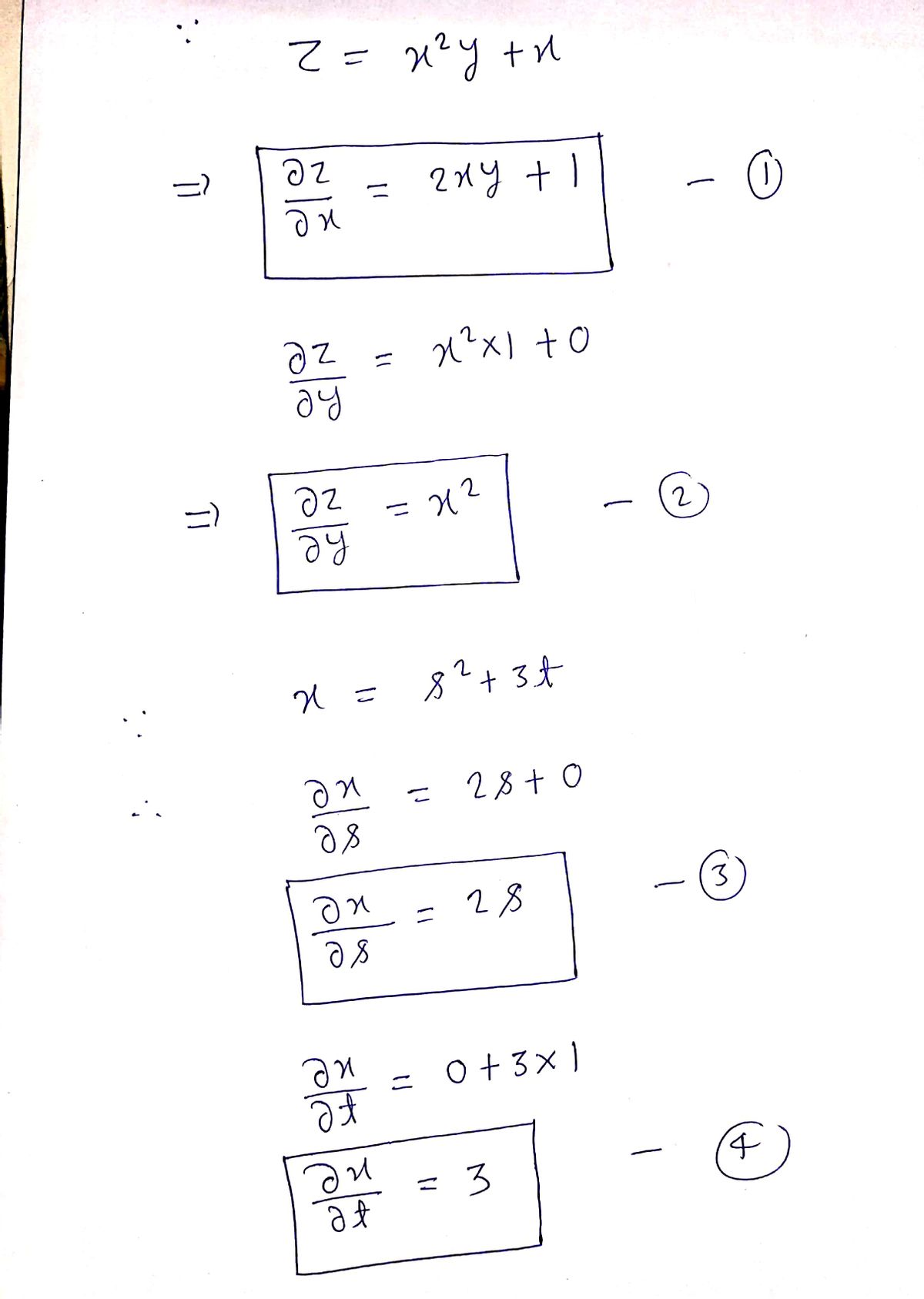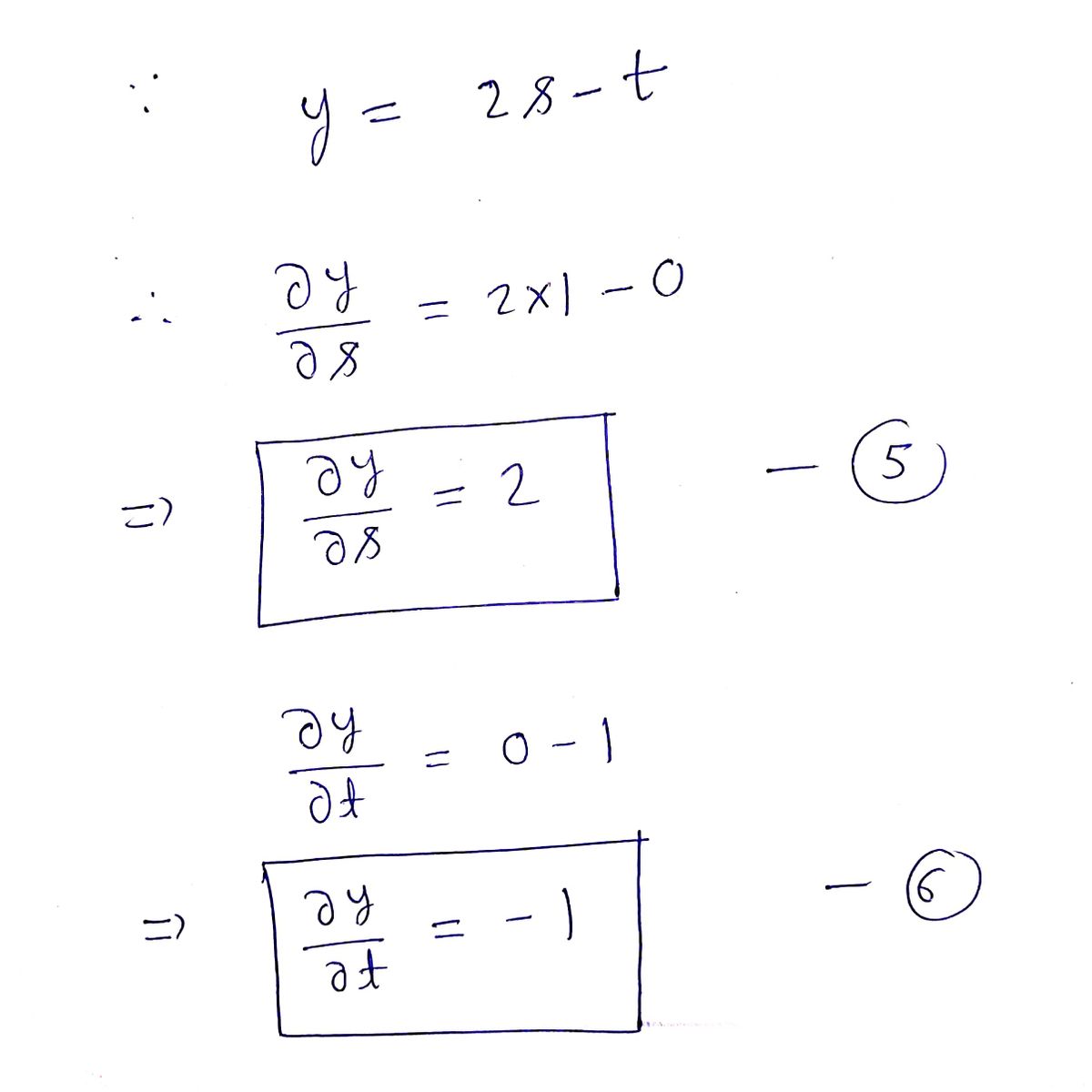2.) Use the chain cule to find dz and d ond guen the fllowng: Yoy must show in work that your the chain rule you are using 2. 25- こ
2.) Use the chain cule to find dz and d ond guen the fllowng: Yoy must show in work that your the chain rule you are using 2. 25- こ
Advanced Engineering Mathematics
10th Edition
ISBN:9780470458365
Author:Erwin Kreyszig
Publisher:Erwin Kreyszig
Chapter2: Second-order Linear Odes
Section: Chapter Questions
Problem 1RQ
Related questions
Topic Video
Question
![**Using the Chain Rule to Find Derivatives**
**Objective:**
To use the chain rule to find the derivatives \(\frac{dz}{ds}\) and \(\frac{dz}{dt}\).
**Given:**
- You must demonstrate in your work that you are using the chain rule.
- Equations:
\[
z = x^2y + tx
\]
\[
x = s^2 + 3t
\]
\[
y = 25 - t
\]
**Instructions:**
1. Identify the variables and their relationships:
- \(z\) is a function of \(x\), \(y\), and \(t\).
- \(x\) is a function of \(s\) and \(t\).
- \(y\) is a function of \(t\).
2. Apply the chain rule:
- Differentiate \(z\) with respect to \(s\) and \(t\) by using the chain rule to incorporate the dependence of \(z\) on \(x\), \(y\), and directly on \(t\).
3. For \(\frac{dz}{ds}\), consider how \(x\) and thus \(z\) changes with \(s\).
4. For \(\frac{dz}{dt}\), account for the changes in \(x\), \(y\), and \(t\).
**Note:**
Organize your work clearly to demonstrate the use of the chain rule in obtaining derivatives.](/v2/_next/image?url=https%3A%2F%2Fcontent.bartleby.com%2Fqna-images%2Fquestion%2F7dbb4ae4-0d65-4baa-9481-63f79be91eca%2Fc0353be8-be65-478f-9f59-3e827fa3383d%2F0sbz20i_processed.jpeg&w=3840&q=75)
Transcribed Image Text:**Using the Chain Rule to Find Derivatives**
**Objective:**
To use the chain rule to find the derivatives \(\frac{dz}{ds}\) and \(\frac{dz}{dt}\).
**Given:**
- You must demonstrate in your work that you are using the chain rule.
- Equations:
\[
z = x^2y + tx
\]
\[
x = s^2 + 3t
\]
\[
y = 25 - t
\]
**Instructions:**
1. Identify the variables and their relationships:
- \(z\) is a function of \(x\), \(y\), and \(t\).
- \(x\) is a function of \(s\) and \(t\).
- \(y\) is a function of \(t\).
2. Apply the chain rule:
- Differentiate \(z\) with respect to \(s\) and \(t\) by using the chain rule to incorporate the dependence of \(z\) on \(x\), \(y\), and directly on \(t\).
3. For \(\frac{dz}{ds}\), consider how \(x\) and thus \(z\) changes with \(s\).
4. For \(\frac{dz}{dt}\), account for the changes in \(x\), \(y\), and \(t\).
**Note:**
Organize your work clearly to demonstrate the use of the chain rule in obtaining derivatives.
Expert Solution
Step 1
We have to find partial derivatives.
Concept:

Step 2

Step 3

Step by step
Solved in 5 steps with 5 images

Knowledge Booster
Learn more about
Need a deep-dive on the concept behind this application? Look no further. Learn more about this topic, advanced-math and related others by exploring similar questions and additional content below.Recommended textbooks for you

Advanced Engineering Mathematics
Advanced Math
ISBN:
9780470458365
Author:
Erwin Kreyszig
Publisher:
Wiley, John & Sons, Incorporated

Numerical Methods for Engineers
Advanced Math
ISBN:
9780073397924
Author:
Steven C. Chapra Dr., Raymond P. Canale
Publisher:
McGraw-Hill Education

Introductory Mathematics for Engineering Applicat…
Advanced Math
ISBN:
9781118141809
Author:
Nathan Klingbeil
Publisher:
WILEY

Advanced Engineering Mathematics
Advanced Math
ISBN:
9780470458365
Author:
Erwin Kreyszig
Publisher:
Wiley, John & Sons, Incorporated

Numerical Methods for Engineers
Advanced Math
ISBN:
9780073397924
Author:
Steven C. Chapra Dr., Raymond P. Canale
Publisher:
McGraw-Hill Education

Introductory Mathematics for Engineering Applicat…
Advanced Math
ISBN:
9781118141809
Author:
Nathan Klingbeil
Publisher:
WILEY

Mathematics For Machine Technology
Advanced Math
ISBN:
9781337798310
Author:
Peterson, John.
Publisher:
Cengage Learning,

